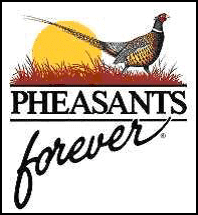Significant economic ramifications of declining pheasant numbers for state.


Pierre, S.D. –-(Ammoland.com)- South Dakota released the results from its highly-anticipated annual pheasant brood survey today, which revealed a 64 percent decrease in statewide pheasant abundance. Pheasants Forever says upland habitat loss is the primary culprit in the downturn of South Dakota’s legendary pheasant population, a trend which will continue unless federal policy makers swiftly enact strengthened conservation policies.
“By not passing a Farm Bill, by not including the ‘Protect Our Prairies Act’ (also known as Sodsaver provisions), by not re-linking crop insurance payments to conservation compliance, federal policy makers are all but ensuring this unprecedented habitat loss will continue in South Dakota and across the Midwest,” says Dave Nomsen, Pheasants Forever’s Vice President of Governmental Affairs. “South Dakota’s identity as the top pheasant-producing state, and as our nation’s premier pheasant hunting destination, is truly dependent on Congressional action.”
Nomsen added the passage of a new Farm Bill is the single most important aid to South Dakota upland habitat that can be made with immediacy, while state-level and private organization contributions need to be part of a more comprehensive conservation effort.
While weather events in recent years – tough winters, cold, wet springs and heat and drought – undoubtedly earn a share of the blame for the diminished pheasant numbers, Nomsen says the impact of the habitat loss is unmistakable, pointing to the destruction of Conservation Reserve Program (CRP) acres and conversion of other grasslands.
“For the first time in two decades, there were less than 1 million CRP acres in South Dakota for pheasants to nest in,” says Nomsen, who, along with many wildlife biologists, considers this well below the threshold level of 1.25-1.5 million acres necessary for sustaining a world-class pheasant population. “Landowners need to know these conservation programs will remain viable, so passing a Farm Bill that reauthorizes the Conservation Reserve Program, Wetlands Reserve Program and other wildlife-friendly, USDA conservation programs, is a step lawmakers must take this September.”
Additionally, non-CRP grassland conversion, including native prairie, has further reduced available pheasant nesting cover.
“The Protect Our Prairies Act is the single best thing we can do to preserve native grasslands,” Nomsen says of the bill introduced earlier this year by South Dakota U.S. Representative Kristi Noem.
The Protect Our Prairies Act would conserve native grasslands by reducing crop insurance payments for newly-broken native grasslands, thereby dis-incentivizing farmers to do so.
Pheasants are big business in South Dakota. In fact, the South Dakota Department of Tourism estimates pheasant hunting generates 223 million dollars in retail economic impact annually and an additional 111 million dollars in salaries annually. Additionally, the state estimates there are 4,500 jobs linked directly to the pheasant hunting industry and related tourism.
South Dakota’s pheasant population has fallen from a modern historic high in just a few years, and Nomsen says given the prolific nature of these birds, a rebound in equal short order is possible, provided new and improved habitat is added.
“Having Congress pass a comprehensive Farm Bill right now is the first step. Additionally, all stakeholders concerned about preserving and enhancing the traditions of pheasant hunting dear to South Dakota should begin evaluating their roles and how they can work together supporting the habitats critical for this iconic bird important to the state’s identity, economy and culture,” Nomsen says.
Pheasants Forever, including its quail conservation division, Quail Forever, is the nation’s largest nonprofit organization dedicated to upland habitat conservation. Pheasants Forever and Quail Forever have more than 135,000 members and 730 local chapters across the United States and Canada. Chapters are empowered to determine how 100 percent of their locally raised conservation funds are spent, the only national conservation organization that operates through this truly grassroots structure.
Pheasants Forever is dedicated to the conservation of pheasants, quail and other wildlife through habitat improvements, public awareness, education and land management policies and programs.
